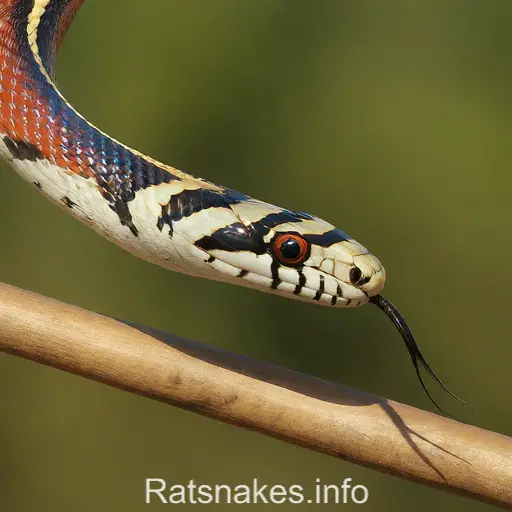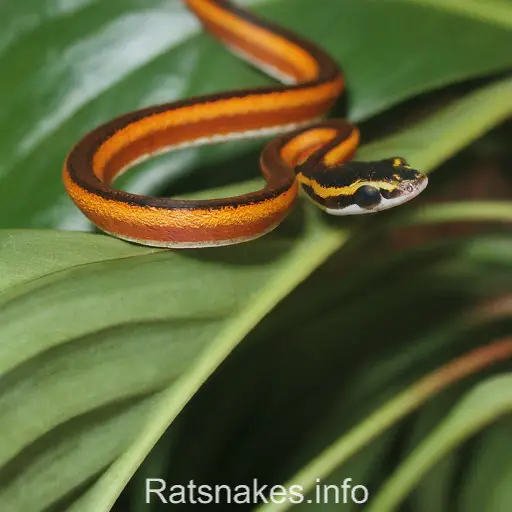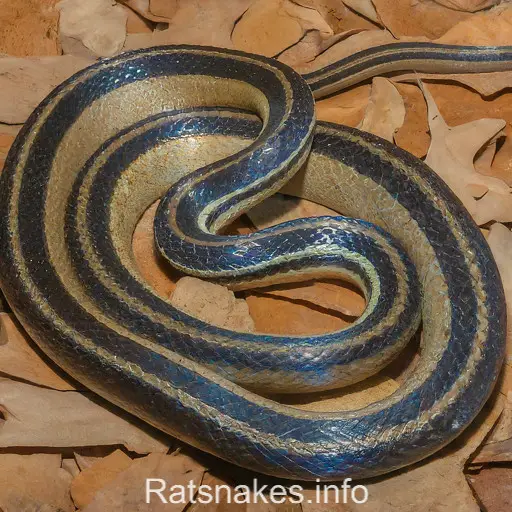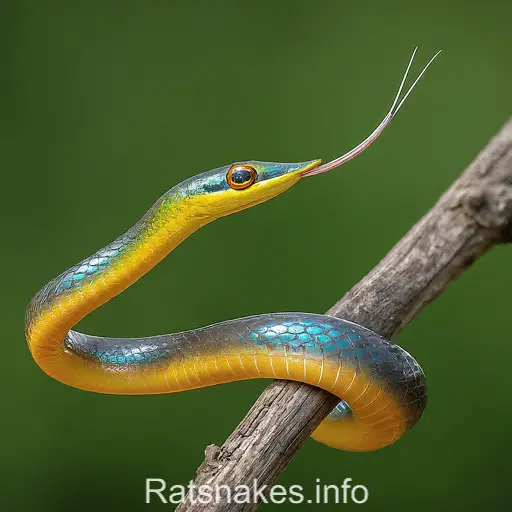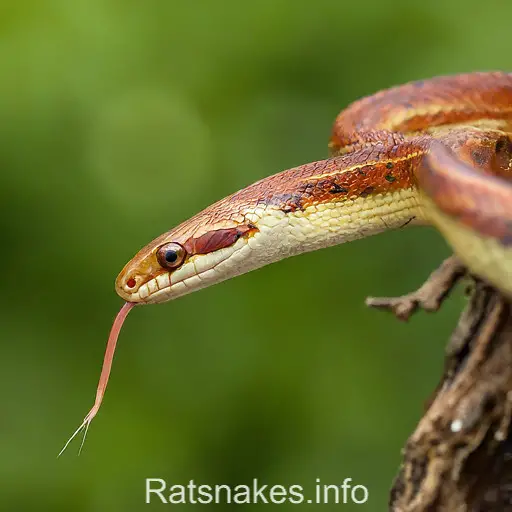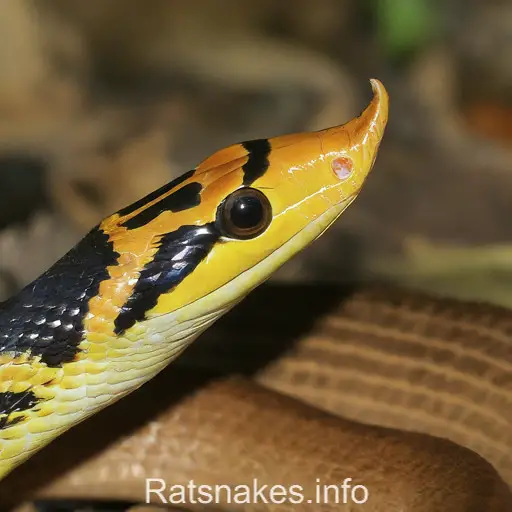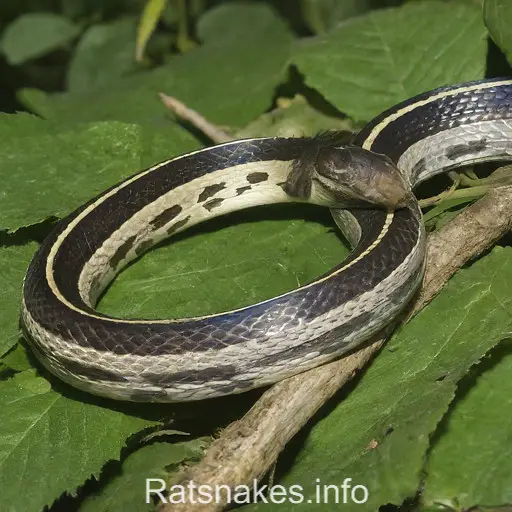
Welcome to our guide on Pantherophis vulpinus, commonly known as the Eastern Foxsnake. These fascinating reptiles are native to the central United States and are known for their striking appearance and unique behaviors. Join us as we delve into the world of Pantherophis vulpinus and uncover the secrets of these remarkable creatures.
With their distinctive coloration and impressive size, Eastern Foxsnakes are a sight to behold in their natural habitat. From their diet and hunting techniques to their preferred habitats and conservation status, there is much to learn about these elusive snakes. Let’s explore the world of Pantherophis vulpinus together and gain a deeper understanding of their importance in the ecosystem.
Origins of Pantherophis Vulpinus
Pantherophis vulpinus, commonly known as the Eastern Foxsnake, has a rich and diverse history in the central United States. These fascinating snakes have roamed the region for centuries, adapting to their environment with remarkable resilience.
Eastern Foxsnakes have been an integral part of the local ecosystem, playing a crucial role in maintaining balance within their habitats. Their evolution and survival strategies have made them a symbol of adaptability and natural selection in the wild.
With a range that covers states such as Michigan, Wisconsin, Iowa, and Illinois, these snakes have established themselves as a native species deeply connected to the heartland of America. Their presence in these regions underscores the importance of preserving local biodiversity and ecosystems.
Throughout generations, Pantherophis vulpinus has thrived in various landscapes, from grasslands to forests, showcasing their ability to thrive in diverse surroundings. This adaptability has contributed to their continued existence and success as a species.
As we delve deeper into the origins of Eastern Foxsnakes, we unravel a story of survival, resilience, and interconnectedness with the natural world. Exploring their historical journey allows us to appreciate the intricate web of life that sustains these majestic creatures.
Distinctive Appearance of Eastern Foxsnakes
With a striking appearance, Eastern Foxsnakes are easily recognizable in the wild. Known for their distinctive color patterns, they typically have a light brown to gray base color, accented by dark blotches or bands that run along their bodies. These markings are instrumental in camouflaging them within their surrounding environments, allowing them to blend seamlessly into the grasslands, forests, and marshes where they reside.
One key feature that sets the Eastern Foxsnake apart is its facial markings. They often sport a dark line that extends from the eye to the corner of the mouth, giving them a unique and almost mask-like appearance. These patterns not only contribute to their visual appeal but also serve a functional purpose in breaking up their silhouette and making them less visible to potential predators.
In addition to their coloration, Eastern Foxsnakes have distinctive scales that are smooth to the touch, adding to their sleek and streamlined look. These scales play a crucial role in protecting them from abrasions and injuries as they navigate through various terrains. Overall, the unique appearance of the Eastern Foxsnake is a testament to their evolution and adaptation to the diverse landscapes they inhabit.
Behavioral Traits and Hunting Techniques
When it comes to Pantherophis vulpinus, their behavioral traits and hunting techniques are fascinating to observe. Here are key points to understand:
- Diurnal Habits: These snakes are primarily diurnal in nature, meaning they are most active during the day. This behavior allows them to bask in the sun and search for prey while avoiding nighttime predators.
- Ambush Predators: Pantherophis vulpinus are ambush predators, relying on their excellent camouflage to blend into their surroundings and surprise their prey.
- Constriction Strategy: Once they spot their prey, these snakes use a constriction strategy to subdue it. They wrap around their victim, restricting movement to disable and eventually consume it.
- Prey Preference: Their diet consists mainly of small mammals, such as mice, voles, and rabbits. This preference influences their hunting techniques and foraging behavior in their natural habitat.
Overall, the behavioral traits and hunting techniques of Pantherophis vulpinus showcase their adaptability and efficiency as predators in the wild.
Preferred Habitats of Eastern Foxsnakes
When it comes to Pantherophis vulpinus, it’s essential to understand their preferred habitats. These snakes can be found in a variety of environments. Here are some key points to note:
- Forested Areas: Eastern Foxsnakes tend to thrive in forested habitats where they can blend in seamlessly with the surroundings.
- Grassy Meadows: These snakes also frequent grassy meadows, taking advantage of the open spaces for hunting and basking.
- Wetlands: Pantherophis vulpinus are known to inhabit wetlands areas, utilizing the vegetation and water sources for their survival.
Our understanding of the preferred habitats of Eastern Foxsnakes plays a crucial role in conservation efforts and ecosystem management. By recognizing and protecting these habitats, we can help ensure the continued existence of these fascinating snakes in the wild.
Conservation Status and Importance
When it comes to the conservation status of the Eastern Foxsnake, Pantherophis vulpinus, it’s essential to note that these snakes face threats in the wild that impact their population numbers. Habitat loss due to deforestation and urban development poses a significant danger to these reptiles. Additionally, road mortality, illegal collection for the pet trade, and pesticide use also contribute to their decline in certain regions.
As we consider the importance of conserving Eastern Foxsnakes, it becomes evident that they play a crucial role in maintaining the balance of ecosystems they inhabit. These snakes act as predators that help control rodent populations, thereby contributing to the overall health of the ecosystem. By keeping rodent numbers in check, they indirectly support plant diversity and prevent damage to crops.
Furthermore, the presence of Eastern Foxsnakes in their natural habitats can indicate the overall health of the ecosystem. As indicator species, changes in their populations can signal shifts in environmental conditions, alerting us to potential problems that may affect other wildlife in the area.
In light of these factors, efforts to protect and preserve the habitats of Eastern Foxsnakes are crucial for ensuring their continued survival. Conservation initiatives focused on habitat restoration, educational programs, and community engagement are essential for raising awareness about the importance of these snakes and garnering support for their conservation. By working together, we can help safeguard the future of the Eastern Foxsnake and the diverse ecosystems they call home.
Key Takeaways
- Pantherophis vulpinus, also known as the Eastern Foxsnake, is a native species to the central United States, with a range encompassing states such as Michigan, Wisconsin, Iowa, and Illinois.
- Eastern Foxsnakes display distinctive color patterns and facial markings that aid in camouflage and protection from predators, showcasing their adaptation to diverse landscapes.
- These snakes are diurnal, ambush predators that rely on constriction to subdue their prey, with a diet mainly consisting of small mammals like mice, voles, and rabbits.
- Eastern Foxsnakes prefer habitats such as forested areas, grassy meadows, and wetlands, highlighting the importance of preserving these environments for their conservation.
- Conservation efforts are crucial for the survival of Eastern Foxsnakes due to threats like habitat loss, road mortality, illegal collection, and pesticide use. These snakes play a vital role in ecosystem balance by controlling rodent populations and serving as indicator species for environmental health.
Conclusion
Eastern Foxsnakes, like Pantherophis vulpinus, play a vital role in maintaining the balance of our ecosystems. By regulating rodent populations, they contribute significantly to the health of our environment. As indicator species, Eastern Foxsnakes offer valuable insights into the changes occurring in their habitats. Our conservation efforts are essential in safeguarding these snakes and the diverse ecosystems they are a part of. Through habitat preservation, education, and community engagement, we can ensure a sustainable future for Eastern Foxsnakes and the interconnected web of life they support. Let’s continue working together to protect these remarkable creatures and the environments they call home.

